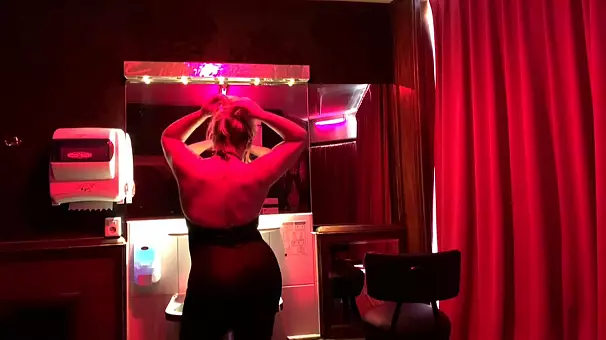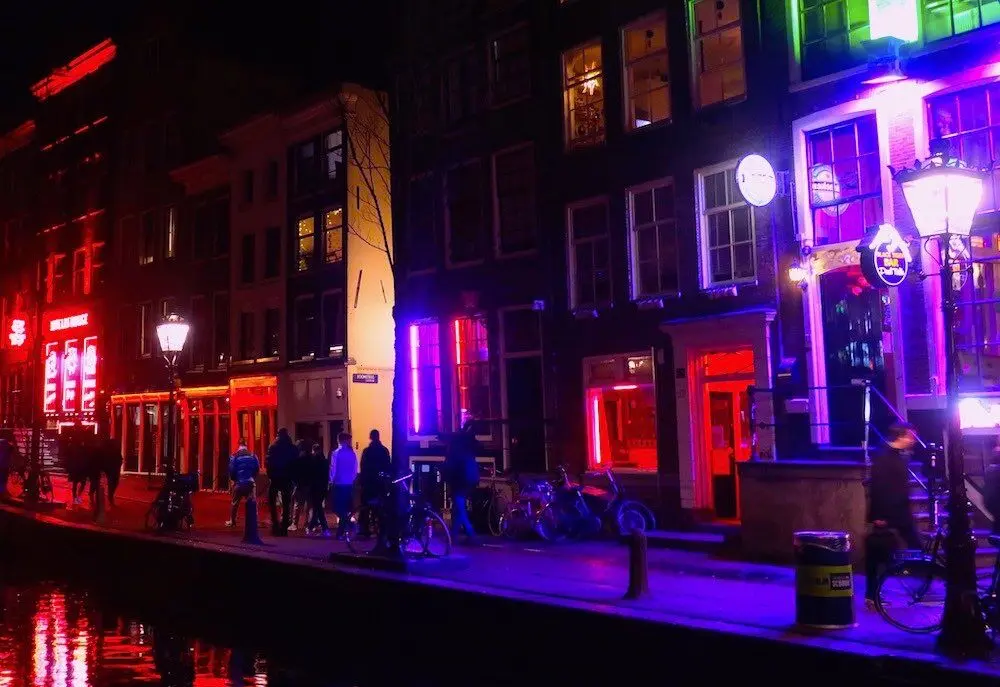In the Red Light Districts of Amsterdam you will find, on any given day, hundreds of girls offering sex for money. Nowhere else on earth are the women so straightforwardly on display, sitting sparingly attired on stools behind windows. Nowhere else except in the other main Dutch cities, because this conspicuous window prostitution is distinct to the Netherlands, as distinct as the habit that many of its residents have for living their lives behind open curtained windows.

In the Red Light Districts of Amsterdam you will find, on any given day, hundreds of girls offering sex for money. Nowhere else on earth are the women so straightforwardly on display, sitting sparingly attired on stools behind windows. Nowhere else except in the other main Dutch cities, because this conspicuous window prostitution is distinct to the Netherlands, as distinct as the habit that many of its residents have for living their lives behind open curtained windows.

Amsterdam's main Red Light District, known locally as the Walletjes (spoken form), or Wallen (written form), or generically as Rossebuurt (red or pink neighbourhood), is situated along and around two of the city's oldest canals, the Oudezijds Achterburgwal, the Oudezijds Voorburgwal (collectively known as the Burgwallen), and around the Oudekerkplein, in an area bounded by the Warmoestraat and the Nieuwmarkt. It's a place where prostitutes, clergy, kids, junkies, residents and cops all interact with social gezellig and titillated tourists gasp, "Isn't it all so shocking?"
There are three Red Light Districts in Amsterdam. The main area, the Walletjes, and two minor, Singel and Pijp. Additionally a tippelzone (pick-up area) was (until Nov, 2003) maintained for automobile bound clientele. Utrecht, about 30 minutes by train from Amsterdam has it's canal boat based scene, Den Haag has a spiffy modern shopping mall, Rotterdam does not have an RLD, but it does have numerous clubs and private houses (privehuizen). In many smaller cities you also find the RLDs. These are, of course smaller, but have their charms, as they are less "touristy" and more relaxed. Smaller cities that have RLD’s are, for example, Leeuwarden, Groningen and Alkmaar. We particularly enjoy Alkmaar, a pleasant little market town with a cosy little Red Light District.
*For of all the cities within Holland which possess red light districts, as well as their locations, please see this page. *If you’ve ever wondered how many window brothels (raambordelen) there are in Amsterdam, we've counted them, because no one's ever bothered to. *If you're interested in what the official policy of the Netherlands is in regards to prostitution and soft drug use, please read: Official Policy on Prostitution in the Netherland.
The Walletjes.
To begin the tour, we'll start with a location that's very easy to find, Centraal Station. While the station itself is an obvious landmark, the square outside Centraal Station can be messy. Taxis, trams, bikes, roads clotted with traffic, canals and people en masse, it’s enough to make your head spin.
Exiting the station, cross the bridge, and turn left. Your initial heading is the NH Barbizon Hotel, look for it. To the immediate right of the hotel you'll find a street called Zeedijk, which is where we shall begin. The sign points out the direction, "Oosterpark, Waterlooplein, De Wallen"
Zeedijk. The sign points the way. First, let's spend a few minutes on Zeedijk, the oldest quarter in the city.
The Zeedijk, along with the Warmoestraat, the Geldersekade and the Nieuwmarkt are part of the old southern banks of the city where it met the Zuiderzee, and they were from the earliest days the shipping quarter of Amsterdam. The first streets were built on the dams and dikes that start from the Dam (Warmoestraat and Nieuwedijk). Rapidly expanding, the medieval city was extended by digging new canals: first the Kloveniersburgwal and Geldersekade and then the Singel and Spui and all the streets that connect these canals. The Zeedijk is part of this system of dikes and canals. The nearby red light district developed to service the many sailors once found drinking in all the bars and pubs here.
